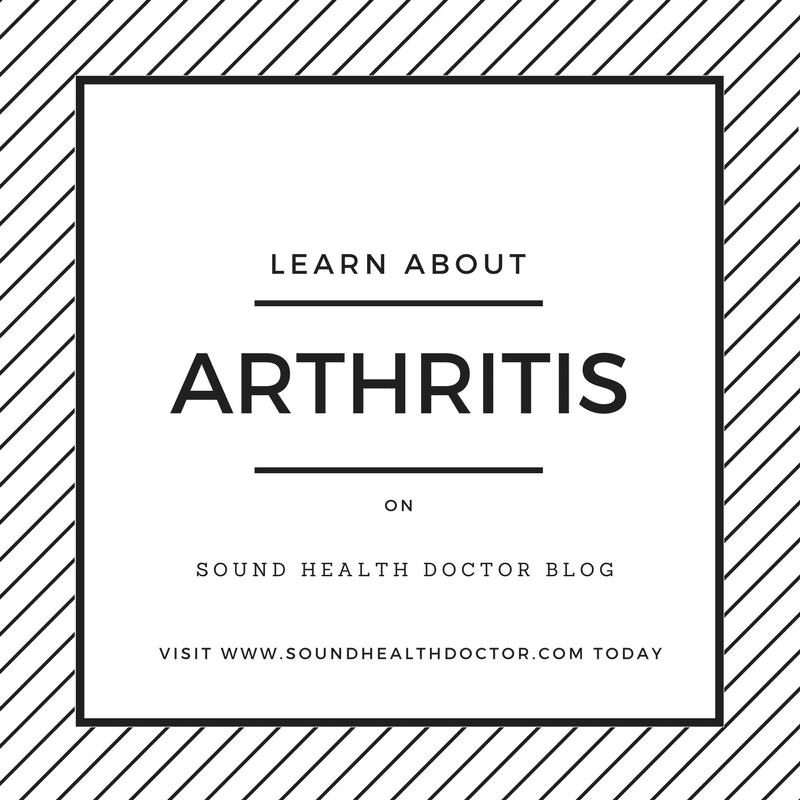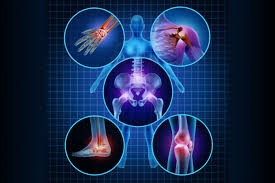Arthritis : Types, Diagnosis And Treatment

Arthritis is a known disease, which is not well understood. Arthritis is not a single disease. More than 100 different types of arthritis. Common arthritis include swelling, pain stiffness and decreased range of motion. They may stay about a year or proceed to a worst case. Arthritis can cause chronic pain and disability to carry out activities. They may cause permanent changes to joint affected. Also, they may be visible as in knobby finger joints. Damage can be seen through x-ray.
Different Types of Arthritis
Synovial joints are well designed to withstand wear, but heavy use over several years cause degenerative changes. Some destruction is inevitable during such activities as jogging, which wears away the articular cartilages and sometimes erodes the underlying articulating surfaces of the bones. The normal aging of articular cartilage begins early in adult life and progresses slowly thereafter. Occurring on the ends of the articulating bones, particularly those of the hip, knee, vertebral column, and hands. These irreversible degenerative changes in joints result in the articular cartilage becoming a less effective shock absorber and lubricated surface. As a result, the articulation becomes increasingly vulnerable to the repeated friction that occurs during joint movements. In some people, these changes do not produce significant symptoms; in others they cause considerable pain.
1. OSTEOARTHRITIS
Osteoarthritis or degenerative joint disease is often accompanied by stiffness, discomfort and pain. It is common older people and usually affects joints that support the weight of their bodies (e.g., the hip and knees). Most substance in the bloodstream, normal or pathological, easily enter the joint cavity. Similarly, traumatic infection of a joint, septicemia, blood poisoning. When the joint symptoms of osteoarthritis are mild or moderate, they can be managed by:
- balancing activity with rest
- using hot and cold therapies
- regular physical activity
- maintaining a healthy weight
- strengthening the muscles around the joint for added support
- using assistive devices
- taking over-the-counter (OTC) pain relievers or anti-inflammatory medicines
- avoiding excessive repetitive movements
2. RHEUMATOID ARHRITIS
Rheumatoid arthritis (RA) is a systematic autoimmune inflammatory disease and results in persistent inflammation of synovial tissue especially of the wrists, hands and feet. Individuals with Rheumatoid Arthritis are 8 times more likely to have functional disability compared with adults in the general population from the same community. The structures around the joint can also be affected, like the tendon sheath, the bursa and tendons. This pathology causes pain, stiffness in the morning and after periods of inactivity, joint swelling, weakness, fatigue and restricted joint mobility leading to reduced function. Without treatment rheumatoid arthritis can lead to irreversible damage, namely deformity and finally provoke considerable physical functional loss or even permanent disability. Thus, RA causes dramatic interference with quality of life if early diagnosis and appropriate treatment are not obtained.
3. INFECTIOUS ARTHRITIS
A bacterium, virus or fungus can enter the joint and trigger inflammation. Examples of organisms that can infect joints are salmonella and shigella (food poisoning or contamination), chlamydia and gonorrhea (sexually transmitted diseases) and hepatitis C (a blood-to-blood infection, often through shared needles or transfusions). In many cases, timely treatment with antibiotics may clear the joint infection, but sometimes the arthritis becomes chronic.
4. METABOLIC ARTHRITIS
Metabolic arthritis is also known as gouty arthritis. Gouty arthritis is a common cause of sudden cause of a sudden onset of a painful, hot, red, swollen joint, particularly in foot at the big toe. Gouty arthritis is reportedly the most common cause of inflammatory arthritis men over the age of 40. It is definitively diagnosed by detecting uric acid (Monosodium Urate) crystals in aspirated sample of the joint fluid. These uric acid crystals can accumulate in the joint and tissues around the joint over years, intermittently triggering repeated bouts of acute inflammation. Repeated attacks of gouty arthritis, or “flares”, can damage the joint and lead to chronic arthritis. Fortunately, while gout is a progressive disease, there are medications to treat gout. Attacks of gouty arthritis can be precipitated when there is a sudden change in uric acid levels, which may be caused by
- overindulgence in alcohol and red meats
- trauma
- starvation and dehydration
- chemotherapy
- medications
HOW TO DIAGNOSE ARTHRITIS
Arthritis diagnosis often begins with a primary care physician, who performs a physical exam and may do blood tests and imaging scans to help determine the type of arthritis. An arthritis specialist, or rheumatologist, should be involved if the diagnosis is uncertain or if the arthritis may be inflammatory. Rheumatologists typically manage ongoing treatment for inflammatory arthritis, gout and other complicated cases. Orthopaedic surgeons do joint surgery, including joint replacements. When the arthritis affects other body systems or parts, other specialists, such as ophthalmologists, dermatologists or dentists, may also be included in the health care team.
TREATMENT OF ARTHRITIS
There are a lot of things can be done in treating arthritis to preserve the joints function, mobility and quality of life. As yet, there’s no single cure for most rheumatic diseases, though many conditions can be effectively controlled. Research has led to great improvements in this area.
Treatments must be tailored to the needs of each individual, because the type, severity and impact of arthritis varies from person to person. You and your healthcare professionals will need to balance the risks and benefits of each treatment, based on your personal needs and circumstances.
DRUGS FOR ARTHRITIS
In the case of inflammatory arthritis, the sooner drug therapies are begun the more effective they’re likely to be. This can reduce the risk of long-term damage to joints and bones.
Drug therapy can be divided into two main groups:
- drugs that treat the symptoms of arthritis (for example pain and stiffness)
- treatments that suppress inflammatory disease and may improve the outcome.
Drugs may be available under different names. Each drug will have an approved (scientific) name – these are the names we use in these pages. But different manufacturers may give their own brand or trade name to a drug – for example, Voltarol is a brand name for diclofenac.
Unfortunately, there’s no effective treatment that doesn’t occasionally cause side-effects. Minor side-effects aren’t uncommon but serious side-effects are rare. For more information on the possible side effects follow the links below for the different types of drugs.
If you have any concerns about your treatment or its side-effects you should discuss these with your GP, rheumatology consultant, a rheumatology nurse or a pharmacist.
Drug therapy can be divided into two main groups:
- Drugs that treat the symptoms of arthritis (for example pain and stiffness):
- Painkillers(analgesics) such as paracetamol reduce pain. These can be used for all types of arthritis. It’s best to take them before an activity that’s likely to aggravate the pain rather than wait until your pain is very bad. They’re also more effective if you take them regularly during a flare-up of pain. While some painkillers are available over the counter, if you’re using these frequently or they aren’t working, your doctor will be able to advise you about alternatives.
- Non-steroidal anti-inflammatory drugs (NSAIDs)reduce stiffness and swelling, as well as relieving pain. They reduce inflammation, but can also be helpful in types of arthritis where inflammation isn’t the main problem (for example osteoarthritis). They can be used for short spells when your symptoms flare up, and in combination with analgesics if you need extra pain relief. You should take the lowest dose of anti-inflammatory drugs that controls your symptoms, and for the shortest time possible. NSAIDs can cause digestive problems (stomach upsets, indigestion or damage to the lining of the stomach) so in most cases NSAIDs will be prescribed along with a drug called a proton pump inhibitor (PPI), which will help to protect the stomach. NSAIDs also carry an increased risk of heart attack or stroke. Different forms of NSAIDs carry a varying degree of risk. Although the increased risk is small, your doctor will be cautious about prescribing NSAIDs if there are other factors that may increase your overall risk – for example, smoking, circulation problems, high blood pressure, high cholesterol or diabetes. Some NSAIDs are available as creams or gels that you can rub on the affected joint.
- Steroids are powerful, natural anti-inflammatory agents. They can be injected into painful joints or into the muscles, and can also be used in tablet They may also have some effect on the way the disease progresses. Steroids are most commonly used to treat inflammatory arthritis and connective tissue disease, but they’re occasionally used for the short-term treatment of osteoarthritis. This is usually done as a joint injection to ease a flare-up in a single joint, or in inflammatory arthritis you may be given a steroid injection into the muscle which works throughout your body. Steroids can have side-effects – especially if used for a long time – as well as great benefits. One of the possible side-effects of steroid treatment is osteoporosis. Because of this, steroids are commonly used only for short periods. If you do need steroid treatment on a long-term basis you may be given other tablets with them to protect against osteoporosis. If you wish to stop using steroids you should discuss this with your doctor as you will need to reduce the dose gradually.
- Treatments that suppress inflammatory disease and may improve the outcome:
- Disease-modifying anti-rheumatic drugs (DMARDs)suppress inflammation and treat the underlying disease. They are used to treat inflammatory types of arthritis and occasionally types of connective tissue disease. It may be several weeks before they have any effect so anti-inflammatory drugs are often used alongside them. It’s usual to have regular blood tests while you’re on DMARDs, and your blood pressure, urine and eyes should also be checked regularly. These drugs can be stopped for short periods without harm, for example, if you’re on a course of antibiotics for an infection.
- Biological therapies are a newer class of drug. They’re used in the treatment of inflammatory arthritis when other types of disease-modifying drugs haven’t been effective. They’re unique in the way they work, as they were made specifically to block messages between the white blood cells that cause inflammation.
Drugs are often beneficial, but they need to be used carefully, according to your doctor’s instructions. If you’re worried, or think that they may be causing side-effects, consult your doctor.
PHYSICAL THERAPIES FOR ARTHRITIS
Often your doctor will recommend a course of physical therapies to help you overcome some of the symptoms of your arthritis. These may include any or all of the following:
- hydrotherapy– exercises in a warm-water pool. The water supports your weight and therefore puts less pressure on your muscles and joints.
- physiotherapy– helps to improve your general fitness and muscle strength, through specific exercises tailored to your condition and individual needs. It can be combined with pain-relieving treatments such as ice or heat packs and massage.
- occupational therapy– practical advice on managing everyday tasks, choosing specialised aids and equipment, protecting your joints from further damage and managing fatigue.
Recommended Arthritis Support Resource
SURGERY FOR ARTHRITIS
Surgery may be necessary and advisable if the damage to your joint is severe enough to cause difficulties in your everyday life, and when other treatment isn’t reducing the pain. Joint replacements are now very sophisticated and successful. Many different joints, including hip, knee, shoulder and elbow, are routinely replaced in people with advanced arthritis. There are also a number of other pain-relieving or reconstructive operations which can be helpful.
Some surgery can be performed with needles and implements without fully opening the joint up. This is called arthroscopy or is sometimes referred to as keyhole surgery. The surgeon will make small (less than 1 cm) incisions to allow a special light and camera to look at the inside of a joint. This can be seen by the surgeon on a television screen. Arthroscopy can be used to help with diagnosis or can form part of treatment.
Who will be involved in my treatment?
Doctors, operational therapy, physiotherapist and surgeon. For more information, visit the nearest registered hospital or health care
Author Bio
 This article was written by Akindele Tomisin, a physiotheraphy student of the College of Medicine, University of Lagos.
This article was written by Akindele Tomisin, a physiotheraphy student of the College of Medicine, University of Lagos.

